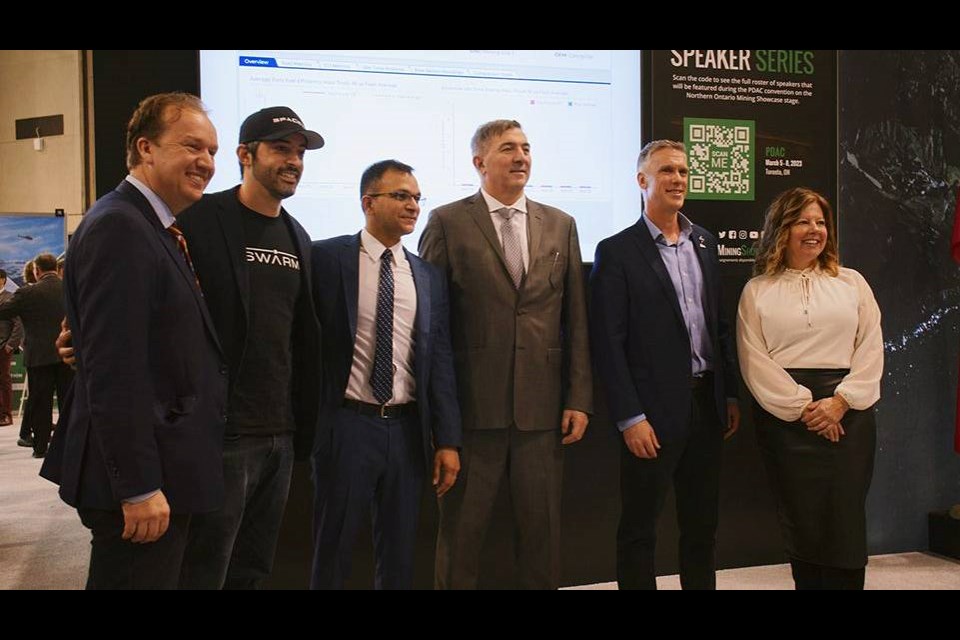The Sudbury tech firm Symboticware has announced a $3.9-million partnership with Swarm, a subsidiary of SpaceX, that will enable mining vehicles anywhere in the world to be fully connected.
Symboticware CEO Ash Agarwal made the announcement in the Northern Ontario Mining Showcase pavilion, during the 2023 convention of the Prospectors and Developers Association of Canada (PDAC) on March 6.
Symboticware’s new, all-in-one device connects mining vehicles via satellite, providing access to a proprietary software and an AI-enabled platform that monitor a vehicle’s performance.
Users simply plug the device into the vehicle for instant access.
They can then use the resulting data to assess the reliability of their equipment, optimize their fuel consumption, and reduce their carbon footprint.
Agarwal said the technology is a necessity as companies around the world push to produce more critical minerals.
“The more we move towards electric vehicles, the more we move towards a green economy, the more mining we have to do,” he said.
Unfortunately, that means generating more pollution, he noted, as most mining vehicles still run on diesel fuel.
And while many mining companies are in the process of changing over their fleets to battery-electric vehicles, Agarwal predicted it would take more than a decade before full conversion is complete.
Partnering with Swarm will give companies an opportunity to increase their vehicles’ efficiency and productivity in the interim.
The new device will provide “satellite connectivity to cover all industrial companies across the planet,” he said. “Anywhere on the planet, wherever it is, we are going to find those machines and make them better.”
Symboticware is being supported in a separate venture with $2.2 million in funding from the provincial and federal governments.
That includes $1,260,250 from the Northern Ontario Heritage Fund, and an additional $950,000 through the Industrial Research Assistance Program of the federal government’s National Research Council Canada.




